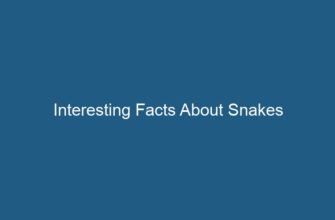Pine trees are beautiful and majestic additions to any landscape, but they can sometimes be plagued by worms, which can cause damage and even death to the tree if left untreated. In this article, we will explore various methods to effectively get rid of worms on pine trees. We will cover the following subtopics:
- 1. Understanding Pine Tree Worms
- 1.1 Identifying Common Pine Tree Worms
- 1.2 Signs of Worm Infestation on Pine Trees
- 2. Manual Removal of Pine Tree Worms
- 2.1 Gather Necessary Tools
- 2.2 Inspect and Remove Worms
- 3. Natural and Biological Controls
- 3.1 Beneficial Insects
- 3.2 Bacterial and Microbial Insecticides
- 3.3 Neem Oil
- 4. Chemical Control Methods
- 4.1 Insecticidal Sprays
- 4.2 Systemic Insecticides
- 5. Preventive Measures
- 5.1 Regular Tree Maintenance
- 5.2 Proper Tree Spacing
- 5.3 Mulching
- 5.4 Inspection and Early Detection
- 6. Seeking Professional Help
- 7. Conclusion
1. Understanding Pine Tree Worms
Pine tree worms, also known as pine sawflies or caterpillars, belong to the insect family Diprionidae. These worms typically feed on pine needles and can cause defoliation, stunted growth, and weakened branches. It is crucial to identify the specific type of worm infesting your pine tree to employ the most suitable control methods.
1.1 Identifying Common Pine Tree Worms
There are several types of worms that commonly infest pine trees. These include:
- Pine Sawfly – These green or black worms have a yellowish head and can be found in clusters on the undersides of pine needles.
- Pine Processionary Caterpillar – These caterpillars are mostly found in southern regions and are known for their distinctive processionary behavior.
- Pine Needle Scale Caterpillar – These small, yellowish-green caterpillars have a waxy covering and are usually found near the base of pine needles.
1.2 Signs of Worm Infestation on Pine Trees
It’s essential to recognize the signs of a worm infestation on your pine tree to take prompt action. Look out for the following indications:
- Visible clusters of worms on the pine needles
- Defoliation or thinning of pine needles
- Discolored or damaged pine needles
- Weakened or dying branches
2. Manual Removal of Pine Tree Worms
If you notice a limited number of worms on your pine tree, manual removal can be an effective method of control. Here’s how you can do it:
2.1 Gather Necessary Tools
Before starting the manual removal process, gather the following tools:
- Pruning shears or scissors
- Bucket or bag for collecting worms
- Gloves for protection
2.2 Inspect and Remove Worms
Thoroughly inspect the pine tree for worm clusters. Carefully cut off the infested branches or affected pine needles using pruning shears or scissors. Collect the worms in a bucket or bag and seal it tightly. Dispose of the worms away from your property to prevent reinfestation.
3. Natural and Biological Controls
Utilizing natural and biological controls can be an eco-friendly way to eliminate worms on pine trees. Here are some effective methods:
3.1 Beneficial Insects
Encourage the presence of beneficial insects that feed on pine tree worms. Ladybugs, lacewings, and parasitic wasps are natural predators that can help control the worm population.
3.2 Bacterial and Microbial Insecticides
Bacterial and microbial insecticides, such as Bacillus thuringiensis (Bt), can be sprayed on the pine tree foliage to target and kill the worms. Follow the manufacturer’s instructions for application.
3.3 Neem Oil
Neem oil, derived from the neem tree, is a natural insecticide that disrupts the feeding and growth of worms. Dilute neem oil according to the instructions and spray it on the affected areas of the pine tree.
4. Chemical Control Methods
If the infestation is severe or other methods have been ineffective, chemical control methods can be considered. However, exercise caution and follow all safety guidelines when using chemical pesticides. Consult a professional if needed.
4.1 Insecticidal Sprays
Insecticidal sprays containing active ingredients like pyrethroids or carbaryl can effectively kill pine tree worms. Ensure to choose a product labeled for use on pine trees and follow the instructions carefully.
4.2 Systemic Insecticides
Systemic insecticides can be applied to the soil around the base of the pine tree. The tree absorbs the insecticide, which then circulates within its tissues, targeting and eliminating the worms. Consult a professional arborist for proper application techniques.
5. Preventive Measures
Preventing worm infestations is crucial for maintaining the health of your pine trees. Here are some preventive measures to consider:
5.1 Regular Tree Maintenance
Maintain the overall health and vigor of your pine trees through regular pruning, watering, and fertilization. Healthy trees are more resistant to pests and diseases.
5.2 Proper Tree Spacing
Ensure adequate spacing between pine trees to allow for proper air circulation and sunlight penetration. This reduces the risk of attracting worms and other pests.
5.3 Mulching
Apply a layer of organic mulch around the base of your pine trees. Mulch helps retain moisture, regulates soil temperature, and discourages the presence of pests.
5.4 Inspection and Early Detection
Regularly inspect your pine trees for signs of worm infestation. Early detection allows for immediate action, minimizing potential damage.
6. Seeking Professional Help
If you are unsure about the severity of the infestation or are unable to effectively control the worms on your pine trees, it is advisable to seek professional help. Arborists and pest control specialists have the knowledge and expertise to assess the situation and provide appropriate solutions.
7. Conclusion
Worm infestations can pose a threat to the health and beauty of pine trees. By understanding the types of worms, identifying signs of infestation, and employing appropriate control methods, you can effectively get rid of worms on pine trees. Remember to consider natural and biological controls, chemical control methods as a last resort, and implement preventive measures to maintain the long-term health of your pine trees.










